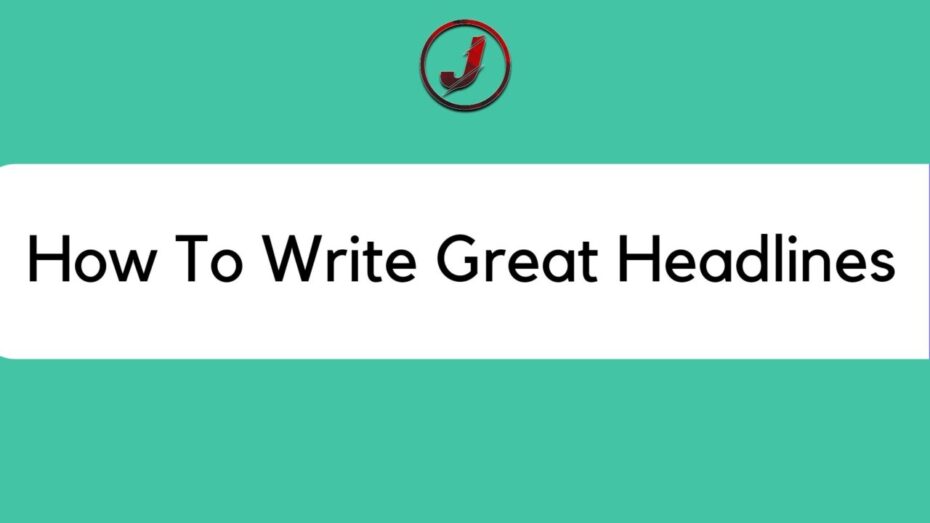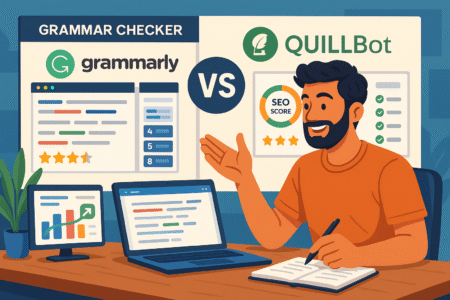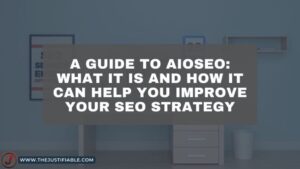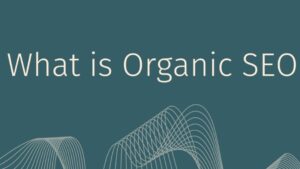Table of Contents
Great headlines are crucial for capturing your audience’s attention and enticing them to read your content. Crafting compelling headlines requires a mix of creativity, strategy, and an understanding of your target audience.
This guide will help you master the art of writing great headlines that drive clicks and engagement.
Understanding the Importance of Great Headlines
Great headlines are essential for the success of any piece of content. They are the first impression your audience gets, and they play a significant role in determining whether readers will engage with your content. I strongly believe that investing time in crafting great headlines is crucial for maximizing the reach and impact of your articles.
Most importantly, great headlines can significantly improve your content’s visibility on search engines. By using the right keywords and structuring your headlines effectively, you can attract more organic traffic to your site. I recommend you focus on creating headlines that are both engaging and SEO-friendly to achieve the best results.
Capturing Audience Attention Instantly
Capturing your audience’s attention instantly is one of the primary goals of a great headline. I would say that your headline should be compelling enough to make readers want to click and read more. Use power words and emotional triggers to create a sense of urgency and curiosity. My advice is to keep your headlines clear and concise, ensuring they deliver a distinct message.
I suggest you consider your target audience when crafting your headlines. Think about what appeals to them and what problems they are looking to solve. Tailoring your headlines to address their specific needs will make them more effective. I believe this approach will help you capture their attention right away.
Additionally, using numbers and lists in your headlines can be very effective. For example, “10 Tips for Writing Great Headlines” is more appealing than a generic headline. My recommendation is to experiment with different formats and see which ones resonate best with your audience.
Lastly, I advise you to avoid clickbait headlines. While they may attract clicks initially, they can damage your credibility and trust with your audience. Focus on creating honest, value-driven headlines that truly reflect the content of your article.
Enhancing Click-Through Rates with Headlines
Enhancing your click-through rates (CTR) is a key aspect of creating great headlines. I recommend you to use actionable language that encourages readers to take the next step. Phrases like “Learn How to” or “Discover the Secrets of” can make your headlines more enticing.
I point out that adding a sense of urgency can also boost your CTR. Words like “Now,” “Today,” or “Limited Time” can prompt readers to click on your headline immediately. However, I suggest using these terms sparingly to avoid overwhelming your audience.
In my opinion, personalization is another effective strategy. Headlines that speak directly to the reader, such as “Your Guide to Writing Great Headlines,” can create a stronger connection and encourage clicks. I advise you to test different personalization techniques to see what works best for your audience.
Finally, I recommend you to track and analyze the performance of your headlines regularly. Use tools like Google Analytics to see which headlines are generating the most clicks and engagement. Based on this data, you can refine your headline strategies to continuously improve your CTR.
Building SEO Value through Headlines
Building SEO value through your headlines is crucial for improving your content’s search engine ranking. I advise you to incorporate your primary keyword naturally within your headline. This helps search engines understand the main topic of your content and can improve your visibility in search results.
I suggest you to use long-tail keywords in your headlines as well. These are more specific phrases that your target audience might be searching for. For instance, “How to Write Great Headlines for SEO” is more specific and likely to attract a more relevant audience.
My recommendation is to keep your headlines under 60 characters to ensure they display correctly in search engine results. Longer headlines can get cut off, which might reduce their effectiveness. I strongly believe concise, keyword-rich headlines are the best approach for SEO.
Lastly, I recommend you to avoid keyword stuffing. Overloading your headline with keywords can make it look spammy and can hurt your SEO rather than help it. Focus on creating a natural, readable headline that incorporates your primary keyword in a meaningful way.
Key Elements of Great Headlines
Great headlines are the backbone of effective content marketing. They not only attract readers but also play a significant role in SEO. I strongly believe that understanding the key elements of great headlines will help you craft titles that resonate with your audience and improve your search engine rankings.
Most importantly, incorporating power words, balancing clarity and creativity, and using numbers and lists are crucial for creating compelling headlines. My recommendation is to focus on these elements to enhance your headlines’ effectiveness.
The Role of Power Words in Headlines
Power words are emotionally charged words that grab attention and elicit a response from readers. I would say they are essential for making your headlines stand out in a crowded content landscape. Words like “amazing,” “ultimate,” and “proven” can make your headlines more compelling and engaging.
My advice is to use power words strategically, ensuring they fit naturally within your headline. Overusing them can lead to a loss of credibility. I recommend you to experiment with different power words to see which ones resonate most with your audience.
Additionally, I suggest considering the context and tone of your content when selecting power words. For instance, a headline for a professional audience might benefit from words like “effective” or “strategic,” while a more casual audience might respond better to words like “fun” or “exciting.”
Lastly, I advise you to keep track of which power words are most effective by analyzing the performance of your headlines. This can help you refine your approach and continuously improve your headline writing skills.
Balancing Clarity and Creativity
Balancing clarity and creativity in your headlines is crucial for attracting and retaining readers. I believe that a great headline should be clear enough to convey the main idea of your content while being creative enough to intrigue readers.
My suggestion is to focus on delivering a clear message that your audience can easily understand. Avoid using jargon or overly complex language that might confuse readers. I recommend you to aim for simplicity and precision in your headlines.
At the same time, creativity should not be sacrificed. I point out that incorporating interesting and unique elements can make your headlines more appealing. This can include using puns, alliteration, or intriguing questions. However, ensure that creativity does not compromise the clarity of the headline.
In my opinion, testing different headline variations can help you find the right balance between clarity and creativity. I suggest you to use tools like A/B testing to see which headlines perform best with your audience.
Using Numbers and Lists Effectively
Using numbers and lists in your headlines is a proven strategy to increase engagement. I think headlines with numbers are particularly effective because they provide a clear structure and set expectations for the reader. For example, “10 Tips for Writing Great Headlines” is more compelling than a vague headline.
My recommendation is to use specific numbers rather than general ones. Specificity can make your content seem more credible and valuable. For instance, “7 Proven Strategies for Crafting Great Headlines” is more appealing than just “Strategies for Crafting Great Headlines.”
Additionally, I advise you to consider using odd numbers in your headlines. Studies have shown that odd numbers tend to attract more attention and are perceived as more authentic. My suggestion is to experiment with different numbers and see which ones resonate best with your audience.
Lastly, I point out that combining numbers with power words can enhance the effectiveness of your headlines. For example, “5 Amazing Tips for Writing Great Headlines” combines both elements to create a more compelling headline.
Tips for Writing Great Headlines
Great headlines are essential for drawing in readers and boosting your content’s visibility. I strongly believe that implementing effective headline writing tips can transform your content marketing strategy. In this section, I will share valuable tips for writing great headlines that capture attention and drive engagement.
Most importantly, focusing on clarity, emotional triggers, and headline variations will significantly improve your headlines’ performance. I advise you to incorporate these elements into your headline writing process for optimal results.
Keeping Headlines Clear and Concise
Clarity and conciseness are crucial when crafting great headlines. I would say that a clear and concise headline quickly communicates the main idea of your content, making it easier for readers to understand and click through.
My recommendation is to use simple language and avoid jargon. This ensures that your headline is accessible to a broader audience. I suggest keeping your headlines to around 60 characters to ensure they display properly on search engines and social media platforms.
Additionally, I point out that eliminating unnecessary words can make your headlines more impactful. For example, instead of saying “Tips for Writing the Best Great Headlines,” you could say “Top Tips for Great Headlines.” This makes the headline more straightforward and engaging.
I believe that testing different headline lengths can help you determine the optimal length for your audience. I advise you to monitor the performance of your headlines and adjust accordingly based on what resonates best with your readers.
Using Emotional Triggers to Engage Readers
Using emotional triggers in your headlines can significantly enhance reader engagement. I think that emotions play a vital role in decision-making, and a well-crafted headline can tap into these emotions to draw readers in.
My suggestion is to identify the emotions you want to evoke in your audience. Whether it’s excitement, curiosity, or urgency, incorporating these feelings into your headlines can make them more compelling. For instance, “Uncover the Secrets to Writing Great Headlines” evokes curiosity and encourages clicks.
I recommend you to use power words that elicit strong emotional responses. Words like “amazing,” “unbelievable,” and “proven” can make your headlines more captivating. I point out that balancing these words with a clear message is essential to avoid sounding sensationalistic.
Additionally, I advise you to consider your target audience’s pain points and desires. Crafting headlines that address these aspects can create a stronger emotional connection. For example, “Transform Your Writing with These Great Headline Tips” speaks directly to readers looking to improve their skills.
I strongly believe that testing different emotional triggers can help you understand what works best for your audience. Experiment with various approaches and refine your strategy based on the results.
Testing Different Headline Variations
Testing different headline variations is a crucial step in optimizing your content. I recommend you to create multiple headlines for each piece of content and analyze their performance to identify the most effective ones.
My advice is to use A/B testing tools to compare different headlines. This allows you to see which versions generate the highest engagement and click-through rates. For instance, you could test a question-based headline against a list-based headline to see which one resonates more with your audience.
I suggest you to vary your headlines by changing elements such as length, power words, and structure. This helps you understand the impact of each component on your headline’s effectiveness. For example, testing “5 Tips for Writing Great Headlines” against “How to Write Great Headlines: 5 Tips” can provide valuable insights.
Additionally, I point out that analyzing headline performance over time can help you refine your approach. Pay attention to trends and patterns in your data to identify what consistently works well.
Lastly, I advise you to stay updated with industry trends and best practices. Learning from successful headlines in your niche can inspire new ideas and help you stay ahead of the competition.
Common Mistakes to Avoid in Headlines
Writing great headlines involves understanding not only what works but also what doesn’t. Avoiding common mistakes can help ensure your headlines are effective and engaging. I strongly believe that recognizing and addressing these pitfalls will significantly enhance your headline writing skills.
Most importantly, steering clear of clickbait techniques, vagueness, and neglecting your target audience will result in more credible and appealing headlines. My recommendation is to focus on creating honest, clear, and audience-focused headlines for the best outcomes.
Overusing Clickbait Techniques
Overusing clickbait techniques is a common mistake that can damage your credibility. I think that while clickbait headlines might generate initial clicks, they often lead to disappointment and mistrust if the content doesn’t deliver on the promise.
My advice is to avoid exaggeration and sensationalism in your headlines. Instead, aim for a balance between intrigue and honesty. For example, instead of “You Won’t Believe These Great Headline Tips!” you could say, “Effective Tips for Writing Great Headlines.” This sets realistic expectations and builds trust.
I suggest focusing on delivering genuine value in your headlines. Highlight the actual benefits or insights your content provides. I point out that readers appreciate honesty and are more likely to engage with content that delivers on its headline’s promise.
Additionally, I recommend you to monitor the performance of your headlines to ensure they are not misleading. Analyzing metrics like bounce rate and time on page can give you insights into how well your content meets reader expectations. I advise you to adjust your headlines based on this data to maintain credibility.
Being Too Vague or Ambiguous
Being too vague or ambiguous in your headlines can confuse readers and reduce engagement. I believe that clarity is key to effective headlines. Readers should immediately understand what your content is about.
My suggestion is to use specific language that clearly conveys the main topic or benefit of your content. Avoid vague terms like “stuff” or “things.” For instance, “Tips for Writing Great Headlines” is more specific than “Things to Know About Headlines.”
I recommend providing enough detail to make your headline informative without being overly complex. For example, “5 Proven Tips for Writing Great Headlines” offers specific information and sets clear expectations for the reader.
I point out that ambiguity can also arise from trying to be overly clever or abstract. While creativity is important, it shouldn’t come at the expense of clarity. I advise you to test your headlines with others to ensure they are easily understood.
Lastly, I suggest incorporating keywords naturally into your headlines to enhance clarity. This not only helps with SEO but also ensures your headline is relevant and specific to the topic at hand.
Ignoring the Target Audience
Ignoring the target audience is a critical mistake in headline writing. I strongly believe that understanding your audience’s needs and preferences is essential for crafting effective headlines.
My recommendation is to research your audience thoroughly. Know their interests, pain points, and what they are looking for. I advise you to tailor your headlines to address these aspects directly. For example, if your audience is interested in SEO, a headline like “Great Headline Tips for SEO Success” would be more appealing.
I suggest using language and tone that resonates with your audience. For a professional audience, a more formal tone might be appropriate, while a casual tone might work better for a younger, more informal audience. I point out that matching your headline style to your audience’s preferences can enhance engagement.
Additionally, I recommend you to test different headlines with segments of your audience to see which ones perform best. This can provide valuable insights into what your readers respond to. I advise you to use this data to refine your headline strategy continuously.
Finally, I suggest keeping your audience’s expectations in mind. Ensure your content delivers on the promise of your headline. This builds trust and encourages repeat engagement, which is vital for long-term success.
Tools and Resources for Creating Great Headlines
Creating great headlines is essential for capturing your audience’s attention and improving your content’s SEO performance. I strongly believe that leveraging the right tools and resources can significantly enhance your headline writing process. Most importantly, using headline analyzers, drawing inspiration from successful headlines, and staying updated with the latest trends are key strategies for crafting compelling headlines.
My recommendation is to incorporate these tools and resources into your workflow to ensure your headlines are both engaging and optimized for search engines. I advise you to experiment with different approaches to find what works best for your audience.
Headline Analyzers and Their Benefits
Headline analyzers are invaluable tools for crafting great headlines. I would say they help you evaluate the effectiveness of your headlines based on various factors such as length, word choice, and emotional impact. Using these tools can provide insights into how your headlines might perform and suggest improvements.
My recommendation is to use popular headline analyzers like CoSchedule’s Headline Analyzer or Sharethrough’s Headline Analyzer. These tools score your headlines and offer suggestions to enhance their appeal and SEO value. For instance, they might recommend adding power words or adjusting the length to make your headline more impactful.
I advise you to analyze several headline variations to determine which one scores the highest. This process can help you identify the elements that make a headline great and apply these principles consistently. For example, a headline that scores high for emotional impact might include words like “amazing” or “unbelievable.”
Additionally, I suggest using the feedback from headline analyzers to refine your writing skills. Over time, you’ll develop a better understanding of what makes a headline effective and be able to craft compelling titles more intuitively.
I believe that incorporating headline analyzers into your writing process can save time and improve the quality of your headlines. Regular use of these tools can help you stay on top of best practices and continually enhance your headline writing abilities.
Inspiration from Successful Headlines
Drawing inspiration from successful headlines is another effective strategy for creating great headlines. I think examining headlines that have performed well can provide valuable insights into what works and why. Look at top-performing articles in your niche and analyze their headlines to understand their appeal.
My suggestion is to keep a swipe file of headlines that catch your eye. This can serve as a source of inspiration when you’re crafting your own headlines. For example, if you notice a trend of list-based headlines performing well, you might incorporate that format into your titles.
I recommend you to study the structure, word choice, and emotional triggers used in successful headlines. This can help you identify patterns and apply similar techniques to your own writing. For instance, headlines that create curiosity or urgency tend to attract more clicks.
Additionally, I advise you to consider the context and audience of successful headlines. What works for one audience might not work for another, so tailor your approach based on the preferences and interests of your target readers.
I strongly believe that learning from successful headlines can help you refine your own headline writing skills. By understanding what makes a headline effective, you can create titles that are more likely to resonate with your audience and drive engagement.
Staying Updated with Headline Trends
Staying updated with the latest headline trends is crucial for maintaining the effectiveness of your content. I recommend you to regularly monitor industry developments and adapt your headline strategies accordingly. This can help you stay ahead of the competition and ensure your headlines remain relevant.
My advice is to follow industry blogs, attend webinars, and participate in online forums where headline trends are discussed. These platforms can provide insights into emerging techniques and best practices. For example, trends might include new ways to use power words or shifts in preferred headline lengths.
I suggest subscribing to newsletters from content marketing experts and organizations. These often include updates on the latest trends and tips for improving your headline writing. Keeping informed can help you incorporate cutting-edge strategies into your workflow.
Additionally, I recommend you to experiment with new trends and measure their impact on your content’s performance. Use A/B testing to compare the effectiveness of different headline styles and adjust your approach based on the results. For instance, if you notice that headlines with certain keywords perform better, you can integrate similar terms into future headlines.
I believe that staying proactive about headline trends is essential for continuous improvement. By staying informed and adaptable, you can ensure your headlines are always optimized for both readers and search engines.
Measuring the Success of Your Headlines
Measuring the success of your headlines is crucial for understanding what resonates with your audience and refining your content strategy. I strongly believe that using data-driven methods to assess your headlines’ performance can lead to more effective and engaging content. Most importantly, tracking engagement metrics and making adjustments based on performance are key steps in this process.
My suggestion is to regularly analyze how your headlines perform to identify patterns and areas for improvement. I advise you to use a combination of tools and techniques to get a comprehensive view of your headlines’ effectiveness.
Tracking Engagement Metrics
Tracking engagement metrics is essential for evaluating the success of your headlines. I recommend you to monitor key indicators such as click-through rates (CTR), bounce rates, and time spent on page. These metrics provide insights into how well your headlines attract and retain readers.
I advise you to use tools like Google Analytics to gather data on your headlines’ performance. For instance, high CTR indicates that your headline is compelling enough to draw clicks, while a high bounce rate may suggest that the content doesn’t meet reader expectations. My recommendation is to look at these metrics regularly to gauge the effectiveness of your headlines.
I think it’s also important to track social media engagement. Metrics like shares, likes, and comments can give you a sense of how well your headlines resonate with your audience on different platforms. This feedback can help you understand what types of headlines work best for social sharing.
Additionally, I suggest conducting A/B testing to compare different headline variations. This method allows you to see which headlines perform better and why. For example, you might test a question-based headline against a statement to see which one generates more clicks and engagement.
Adjusting Strategies Based on Performance
Adjusting your strategies based on performance data is crucial for continuous improvement. I strongly believe that being flexible and responsive to your headlines’ performance metrics can help you optimize your content strategy. My recommendation is to use the insights gained from tracking engagement metrics to refine your approach.
I advise you to identify patterns in your data to understand what types of headlines work best for your audience. For instance, if list-based headlines consistently perform well, you might want to incorporate more of them into your content. I suggest making data-driven adjustments to enhance your headlines’ effectiveness.
I think it’s also important to consider the context of your content when making adjustments. Different topics and formats may require different headline strategies. For example, a how-to article might benefit from a clear, instructional headline, while a thought piece might perform better with a provocative, question-based headline.
My advice is to continually experiment with new headline styles and formats. Testing new approaches can help you discover what resonates most with your audience and keeps your content fresh. For instance, you might try incorporating more emotional triggers or power words based on your performance data.
I point out that regular review and adjustment of your headline strategies can lead to better overall content performance. Staying proactive and responsive to your audience’s preferences is key to maintaining engagement and relevance.
Continuously Improving Headline Writing Skills
Continuously improving your headline writing skills is essential for staying ahead in content marketing. I strongly believe that ongoing learning and practice can help you master the art of crafting great headlines. Most importantly, staying updated with industry trends and best practices can enhance your skills.
My suggestion is to read widely and study headlines from successful content creators. Analyzing what makes their headlines effective can provide valuable insights. For example, you might notice that top-performing headlines often use specific numbers or strong emotional triggers.
I recommend you to participate in writing workshops and webinars focused on headline writing. These can offer practical tips and techniques to improve your skills. I think engaging with other writers and marketers can also provide new perspectives and ideas for your headlines.
Additionally, I advise you to practice writing headlines regularly. The more you write, the better you’ll become at identifying what works and what doesn’t. My recommendation is to challenge yourself by creating multiple headlines for each piece of content and selecting the best one.
I believe that seeking feedback from peers and mentors can also help you improve. Constructive criticism can highlight areas for improvement and provide new approaches to headline writing. I suggest incorporating this feedback into your practice to continuously refine your skills.
I point out that headline writing is both an art and a science. By combining creativity with data-driven insights, you can craft headlines that are not only engaging but also optimized for SEO and audience engagement.






